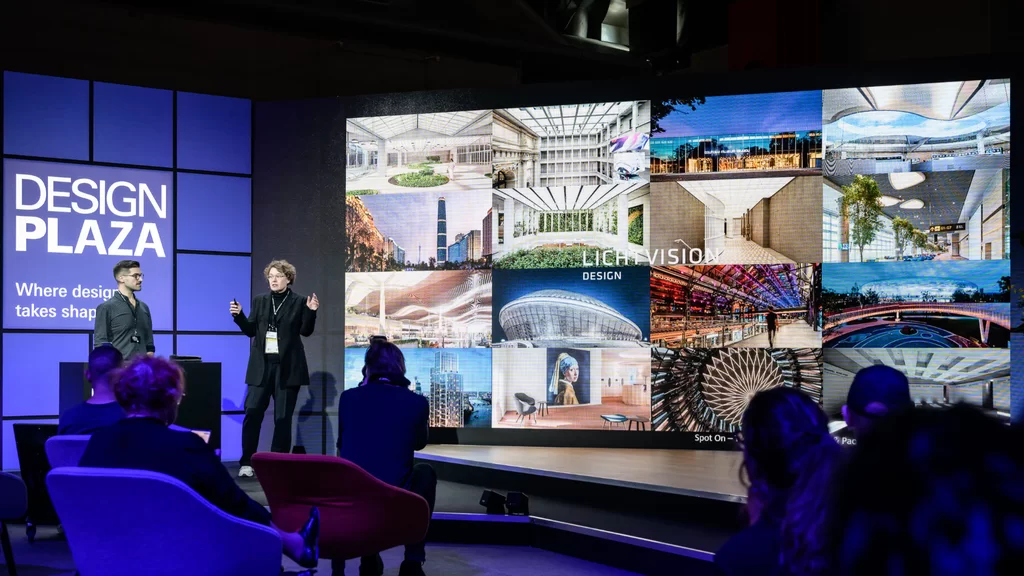Street lighting is an important infrastructural lighting form. Without proper outdoor lights, traveling at night becomes a great challenge. It involves LED street & solar outdoor lighting poles and much more.
The purpose of outdoor lights is to make it safer and more convenient for people to travel in the dark.
It is not an unknown fact that many major accidents occur at night on roads that do not have proper lighting.
Therefore, it won’t be wrong to say that the objective of outdoor lights goes deeper than just illumination. But the job doesn’t end at installing outdoor lights.
Their positioning, lighting, efficiency, and many other factors must also be taken into account carefully.
Contents
- 1 Importance of street lighting
- 2 Types of street lighting
- 3 Street lighting installation guide
- 4
- 5 Smart street lighting system
- 6 Conclusion
Importance of street lighting
For a long time, outdoor lights remained a luxury for just the big cities. However, people observed their benefits and gradually it became a necessity.
These lights are important for the following reasons:
- Safety: It becomes easier for drivers to see pedestrians, animals, and other obstructions such as manholes and pits when there is proper illumination. So, the chances of accidents are reduced.
- Personal security: Mishaps and crimes tend to reduce on roads with effective lights.
- Smooth traffic flow: Lights clear the visibility of the road; thus, allowing smooth traffic.
- Glare reduction: A common issue with drivers is that they do not turn off their high-beam vehicle headlights. This makes it extremely difficult for the other drivers coming from the opposite side to have a clear vision of the road. The lights can help reduce the headlight glare greatly.
- Street aesthetics: The light pole design comes in a wide range of antique and modern options. You can choose from this endless array of light pole designs to beautify your lanes.
| Also see: Smart lighting for homes is the new trend |
Types of street lighting
Outdoor lights are essential infrastructural lights. They come in a wide range of options. Some of the types of lights are:
High-Pressure Sodium Street Lighting
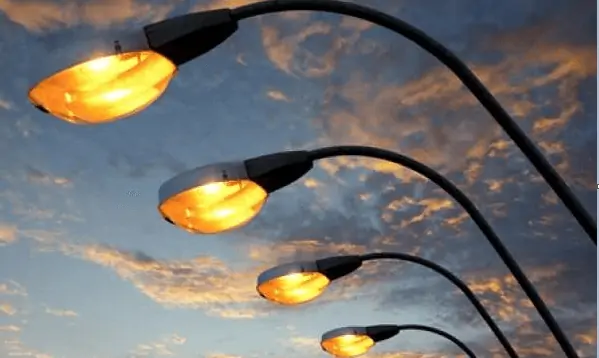
Image Source: Tachyon Light
The HPS lights remain a common type of light. They mix different gases to produce white light. Moreover, they also produce yellow-orange light.
Limitations
- They take a few moments to turn on.
- The HPS lights produce reddish colour at the end of their life.
- You need a transformer to regulate the current and change the voltage.
Induction Street Lighting
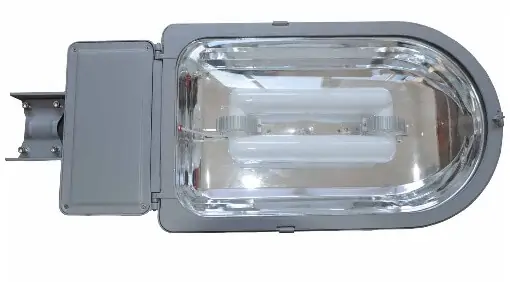
Image Source: Suppliers Tree
The induction outdoor lights have a long lifespan and energy efficiency. They are better alternatives to incandescent lights.
Limitations
- Has a very large size.
- Ineffective lighting control
- Cannot be used in areas with low heights
| Also see: LED lighting : A comprehensive guide for professionals! (shop online) |
CFL Street Lighting (Compact Fluorescent Lamps)
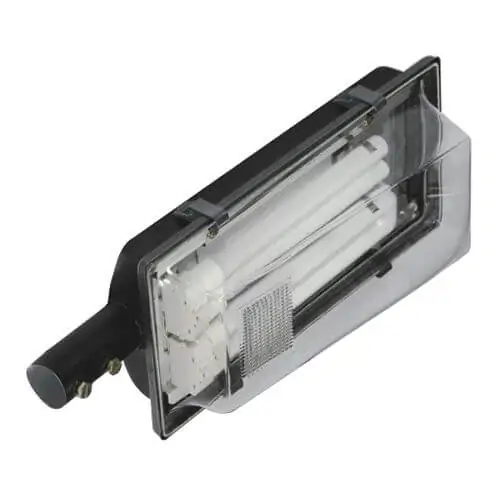
Image Source: Industricals
The CFL outdoor lights mimic the look of the incandescent bulbs but they operate like fluorescent bulbs. CFL lights are good commercial building lights and outdoor lights.
Limitations
- It requires a ballast for power regulation
- The lighting intensity reduces to half of its life cycle
| Also see: Buy wall lights online for every room at best price in India |
LED Street Lighting
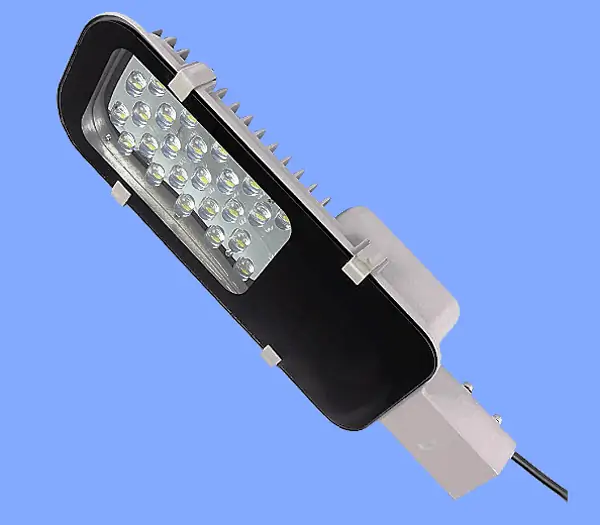
Image Source: ElectroSchematics
LED street lighting is one of the most efficient lighting solutions. The long lifespan of over 50,000 hours makes LED street lighting extremely useful.
LED street lighting produces white and blue lights. It does not need warm-up time. Therefore, this eliminates the limitations of HPS lights.
LED street lighting does not produce toxic chemicals such as mercury lamps.
Unlike CFL lights, LED street lighting can be controlled by dimmers.
The heat emission is extremely less. This makes the lights efficient.
The only limitation with LED street lighting is the expensive upfront cost. However, the low maintenance cost and high-efficiency balance the installation cost quite well.
| Read more about LED lights here. |
Other benefits of LED street lighting:
- Does not emit poisonous gases.
- Less glaring effect.
- High light output.
- Appropriate colour rendering.
- Weather sustainability
- Less light pollution
Solar Street Lighting
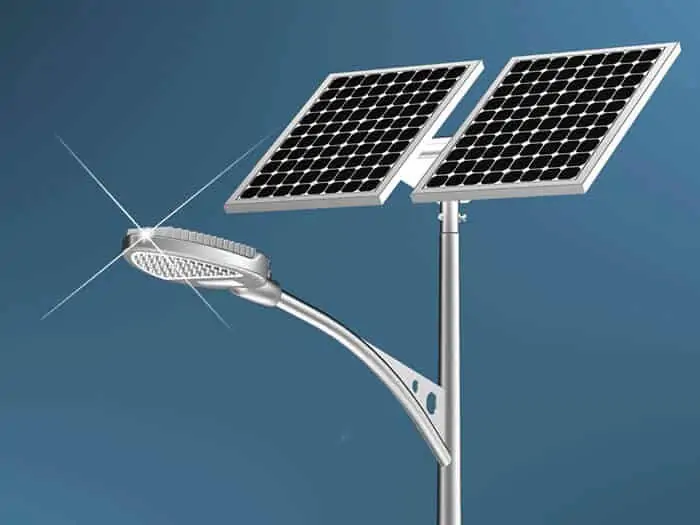
Image Source: Blogging Junction
The solar outdoor light integrates with its favourite LED lights to produce the most sustainable, efficient, and eco-friendly outdoor light solution. These solar street light solutions reduce the expenses to almost zero. Therefore, they make more efficient lights than LED.
Combined benefits of LED and solar energy in solar LED lighting:
- The solar LED street lighting free of cost lighting.
- Using solar street light becomes easier as you can install them anywhere without having to worry about the main power source.
- The solar LED street lighting does not need an outlet to power it. These have solar panels that absorb sunlight and charge the solar batteries that provide ample illumination for 10-12 hours.
- All solar LED street lightings to make eco-friendly lighting solutions. These do not exhaust the natural resources. Moreover, they do not harm the environment.
- The best thing about solar LED outdoor lighting is that it is safe as it does not interact with electrical power sources.
| Also see: 24+ Room lighting ideas: Unveiling expert tips you didn’t know (Buy it) |
Street lighting installation guide
Now that we know all about the types of outdoor lights, let us also understand the correct way of installing them. Simply installing outdoor light poles on the street doesn’t do the job.
You need to make sure that the lights follow a set of guidelines.
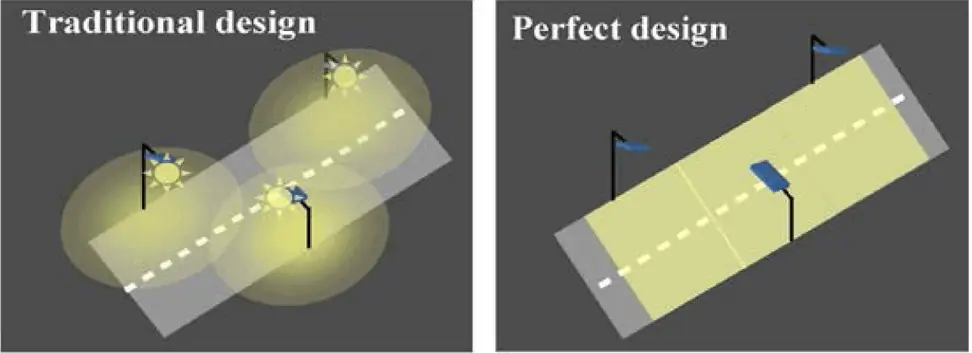
Image Source: ZD Net
Dimensions
The outdoor lights must be arranged in such a way that it offers uniform illumination.
Height
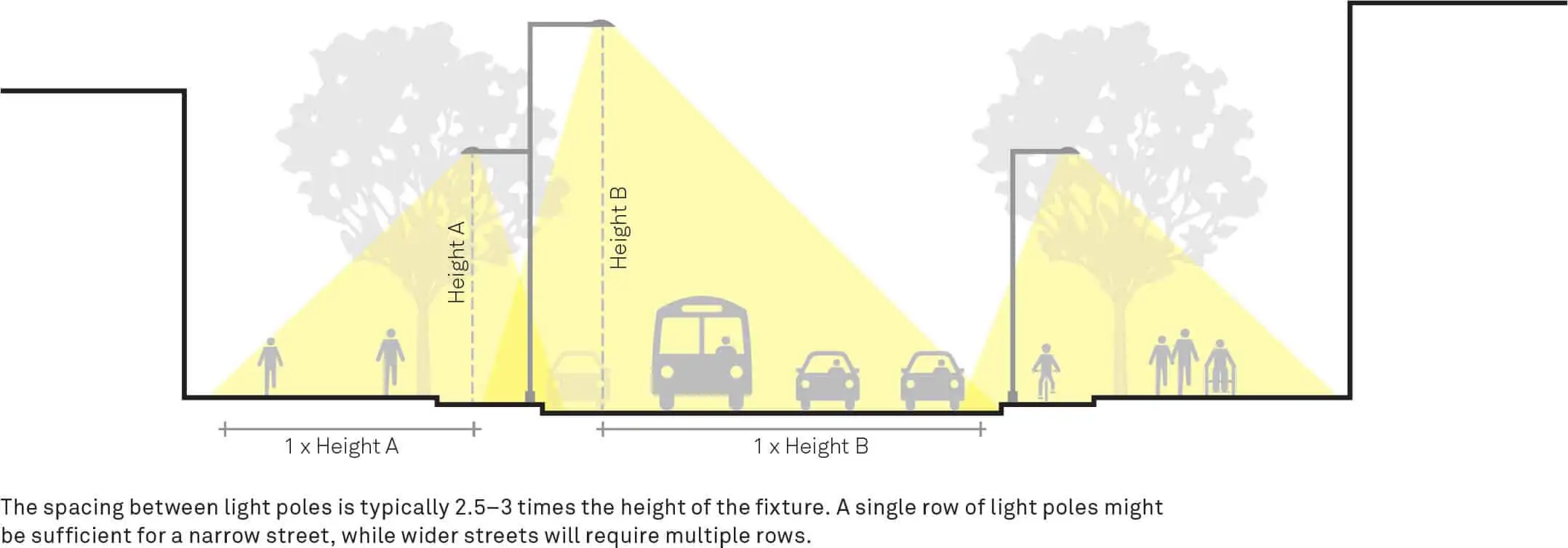
Image Source: Global Designing Cities Initiative
The height of the outdoor lighting pole designs varies according to the width of the street:
1. Standard height of outdoor lighting pole design for sidewalks: 4.5-6 meter.
2. Standard height of outdoor lighting pole design for narrow streets: 8-10 meter.
3. Standard height of outdoor lighting pole design for wider streets: 10-12 meter.
Spacing
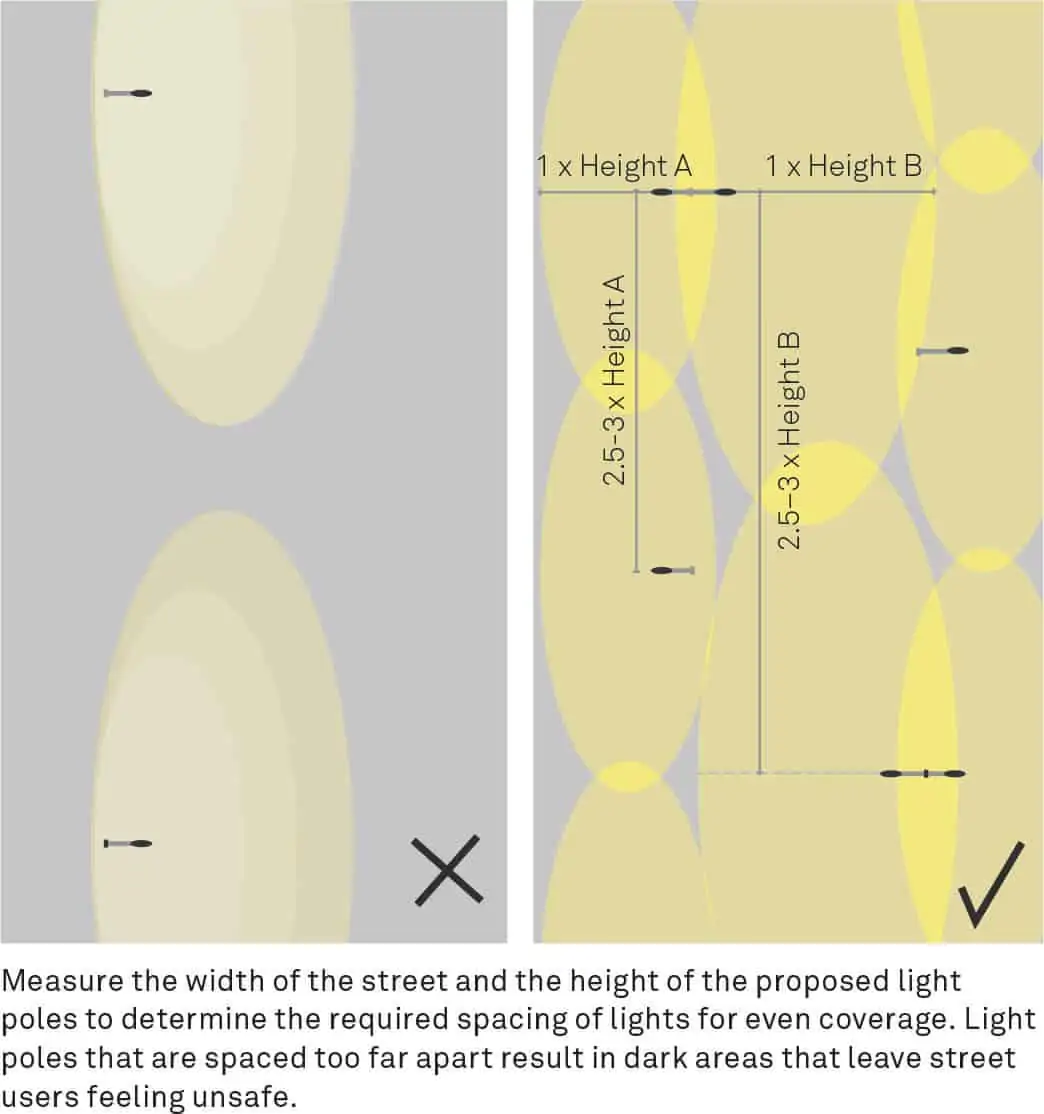
Image Source: Global Designing Cities Initiative
The spacing between two outdoor light poles must remain 2.5-3 times the pole’s height.
Measure the height of the lighting pole and the width of the street to determine the spacing of lights for uniform coverage. Poles that are too distant result in dark areas.
Light cone
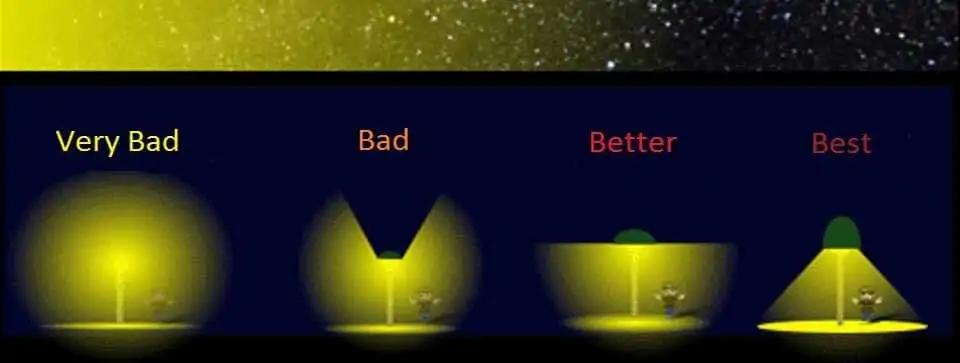
Image Source: National Park Service
The light cone refers to the path of light. It generally has the same diameter as the outdoor light pole’s height from the ground.
Therefore, the height of the outdoor light pole determines the ideal maximum distance between two outdoor lights to avoid dark spots.
Light source
The light source greatly influences the outdoor light’s effectiveness. LED outdoor lights make the best light source for cost-effective and safe lighting.
Light pollution
To avoid light pollution, focus the lights directly onto the streets. This reduces glare and light pollution.
The shielded and cut-off fixtures use less energy with energy-efficient light bulbs.
Temperature
The colour temperature across the outdoor light design project must remain consistent. For pedestrian paths, 3000 Kelvin makes the ideal temperature and for vehicular paths, it is 5000 Kelvin.
Smart street lighting system
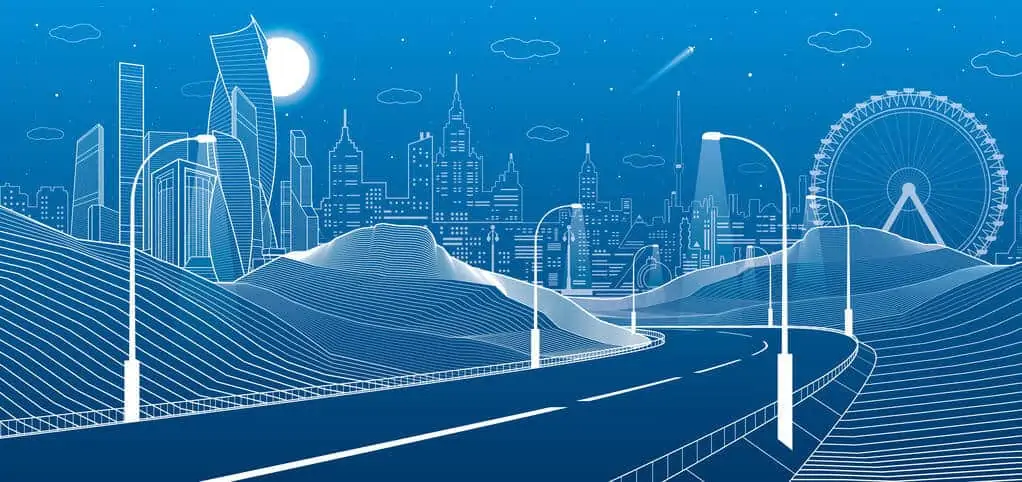
Image Source: Lighting Manufacturer
Need
The current form of outdoor lighting systems particularly solar outdoor lighting systems is an excellent infrastructural lighting solution. However, it lacks the inbuilt mechanism to address various maintenance and repair issues on a real-time basis. A lot of electricity and money gets wasted because of the lack of timely repairs and the use of damaged and faulty systems.
This gives rise to the need of having a more robust outdoor lighting system that is technology-driven. Such a system should have smart and intelligent elements that interact with each other on a real-time basis. This would, in turn, enable the smooth & real-time checking of the outdoor lights, thus minimizing the use of damaged outdoor lights.
Even with solar street lights, if one of the street light poles has an issue, the efficiency reduces. Sometimes, faulty outdoor lights remain unchecked for a long time leaving the street in darkness and danger.
However, with a smart street light system, we can bring more to the table to benefit everyone. The smart street light system interacts at different levels for excellent performance:
- These smart street light systems offer solid data to the city managers regarding functionality, pollution, etc.
- These offer weather condition detection, dynamic lighting, adaptive lighting.
- Smart street lights use various kinds of sensors to detect movement, sound, seismic activity (detect earthquake), monitor traffic, and many other things.
- The city-wide lighting infrastructure works as a single intelligent lighting unit with real-time interaction.
Functionality
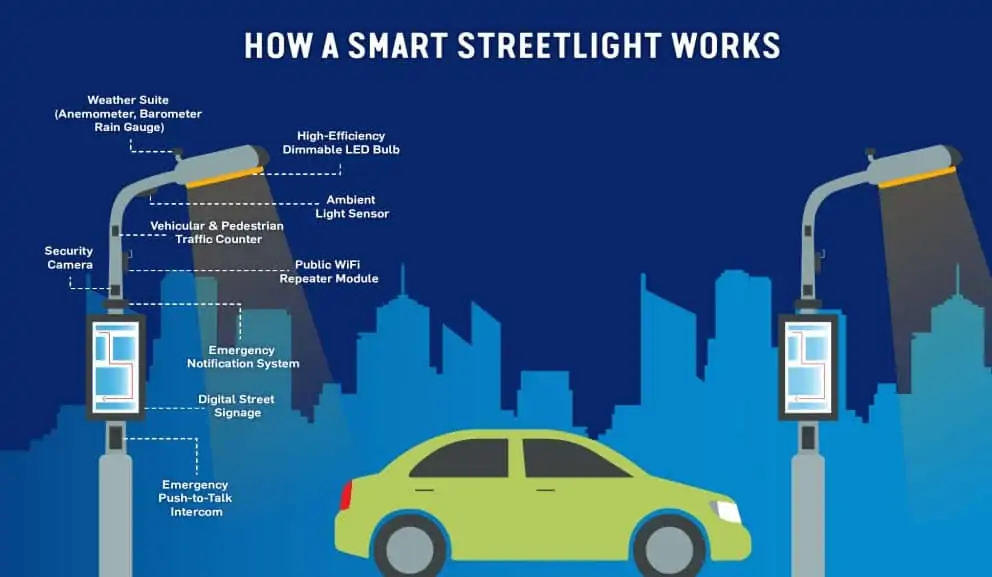
Image Source: Coolfire Solutions
Now that we have understood why we need smart lights, we must also know how they work. The working of smart lights becomes important to understand as it is quite different from regular outdoor lights.
When we talk about the interaction among the elements, we must know what comprises these elements.
The outdoor light system has three main elements:
- Lamp
- Pole
- Power cabinet
Lamp
The lamp further contains three parts:
- Luminaire
- Light bulb
- Lamp driver
It is the lamp that majorly determines the electricity consumption of the entire outdoor light system. Thus, LED street lighting lamps must be chosen over traditional HID lamps.
If you want to go a level up, you can install smart light that has dimmers and sensors for maximum energy efficiency.
These LED lights offer a specific value of luminance, uniformity, and glare. The microcontrollers handle the functions of the street lamps with their exclusive digital approach.
Therefore, the lamp’s well-being is managed effectively. The IoT-based interaction becomes two-way in smart outdoor lights. You can send and receive commands & information from and to the street lamp. The central service center monitors all details such as the weather conditions, number of people and traffic in the area, condition of the road, etc. in real-time.
The smart sensors make it possible for the lamps to receive quick repair in case of any damage.
Street lighting pole
The outdoor light poles remain a mandatory part of the entire system. An intelligent light pole has smart sensors that connect the LED light to the main control station for monitoring and fault diagnosis.
The poles record data such as temperature, air pressure, humidity, wind speed, noise levels, etc. These LED street lighting poles have display screens to display weather data.
Sensors and IoT devices can be mounted on outdoor light poles for smoother and more effective communication between the control station and the outdoor lights.
Power cabinet
Managing a large number of outdoor lights seemed a major challenge. This issue was eliminated by clustering them into smaller groups with the help of a control panel. Later on, automated switches were added to these panels to reduce human intervention to the bare minimum.
These control panels or power cabinets get triggered by alarms in traditional lights and by photocells in solar LED street lights.
However, modern power cabinets have become smarter as they work in a two-dimensional way.
Firstly, they control a specific number of lights.
Secondly, they also manage individual outdoor light devices by linking them to smart sensors. The need for smart lights arose because we need more efficient, less polluting, and more effective outdoor lights.
The power cabinets of smart lights offer segment-level control of more than 200 streetlights communicating as a single unit.
Additionally, they also offer individual lamp control that can detect real-time malfunction reporting, humidity, noise, light measurements, etc. So, you can check and fix any issue even before it can cause any severe damage.
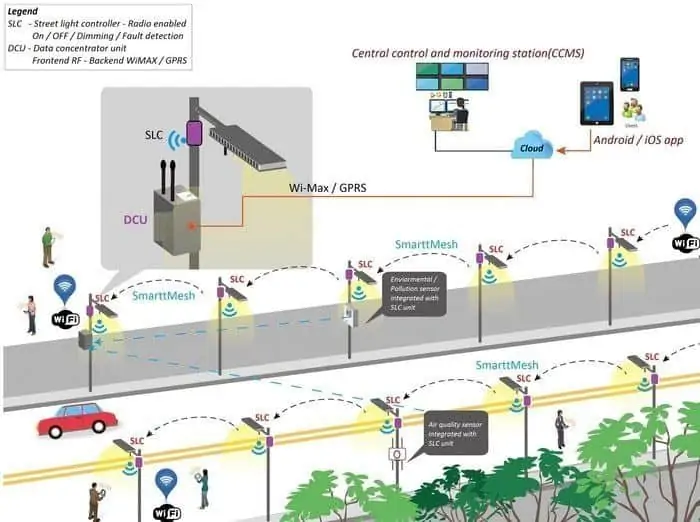
Image Source: fossguru
Conclusion
The outdoor light remains an inseparable part of the city. It is needed for the safety, security, feasibility, and beautification of the streets and roads. People feel much safer traveling at night. This not only makes it advantageous for the people living in the city but also enhances tourism and city ranking globally.
The different types of outdoor lights such as HPS lights, induction lights, and CFLs have been in use for quite a while. However, they come with their set of limitations such as warm-up time, emission of poisonous gases, high energy consumption, etc.
These drawbacks are done away with the introduction of solar LED street lights that consume solar energy and make energy-efficient solutions. The LED lights last longer than their alternatives and turn on immediately.
However, there’s more to outdoor lights than just the lighting fixture. You need to calculate the distance, spacing, height, and other dimensions of the outdoor light project design carefully. If the installation is done abruptly, it will result in dark areas and overly bright areas.
Furthermore, in the future of outdoor lights, the smart outdoor light system makes it possible to interact with the lights in real-time and fix an issue even before it actually surfaces.
All these details will definitely assist you in planning your outdoor light design project efficiently.













